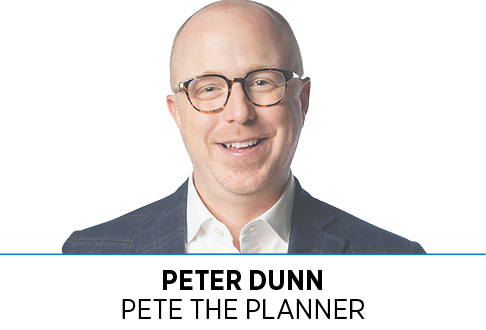Subscriber Benefit
As a subscriber you can listen to articles at work, in the car, or while you work out. Subscribe Now As the clock struck midnight on Dec. 31, the decade that was the 2010s officially ended. Which is fine for me because I never felt quite comfortable referring to that decade as the teens, never mind you the aughts that preceded it. I’m ready for the 20s, and for what they will bring yours and my finances over the next 120 months.
As the clock struck midnight on Dec. 31, the decade that was the 2010s officially ended. Which is fine for me because I never felt quite comfortable referring to that decade as the teens, never mind you the aughts that preceded it. I’m ready for the 20s, and for what they will bring yours and my finances over the next 120 months.
Looking back, my life is ridiculously different than it was 10 years ago. To be fair, though, I didn’t exactly spend a tremendous amount of time predicting the state of my family, finances or hair line. Needless to say, they’re all very different now.
I’m going to try something different for this next decade, and I want you to try it, too. We’re going to predict what the value of our investment account balances will be on Dec. 31, 2029. Then, we’re going to write these numbers down and leave ourselves a passive aggressive note to agonize over years from now.
Of course, one of the complexities of making yourself a note for 10 years in the future is that you don’t know which particular medium will still be relevant. If you made a note for yourself in 2009 on a CD-ROM, good luck finding a place to access it on your home computer.
A tasteful tattoo is probably best. Yes, perfect. Once you calculate your future balances and lift them up as a beacon in the dark financial night, tattoo the prediction on a part of your choosing … or just write it on a piece of paper and put it in your underwear drawer.
Fantastic. Here we go.
There are two numbers you should concern yourself with—122% and 128%.
We’re going to begin by calculating the future value of your current investable assets. A great many factors go into this calculation, but I’ve taken the liberty to simplify them down to one important number for you—122%.
Determine the value of your current investable assets. Whether you have $10,000, $100,000 or $ 1 million, I don’t particularly care. We’re looking forward, not back. The balance of your investment accounts is a product of your past decisions. I only care about the next 10 years right now. You know you’ve done an effective job managing your money when your balance 10 years from today is 122% more than your current balance. A balance of $10,000 should turn itself into $22,200, a balance of $100,000 should increase to $222,000, and a $1 million nest egg should have your assets scrambling to $2.22 million
To easily calculate this aspirational total, multiply your current investment value by 2.22.
But Pete, I plan to continue my contributions to these accounts.
Well, I would hope so. This is precisely why you need to concern yourself with the other number—128%.
If you want to know how much your income should increase your investment account by, take your current income and increase it by 128%. To do this, simply multiply your income by 2.28. That’s the least amount your contributions should increase the value of your investments in the next 10 years. For instance, if your income is $150,000 and you contribute the proper amount to your retirement account over the next 10 years, you will have increased your investment value by about $342,000.
In case you’re wondering how much of your current income you should set aside for long-term investments, the answer is 15% (which includes any employer contribution). Well, at least 15%. Too often, people get caught up in saving the least amount they should set aside for retirement, or worse, less than they objectively should. I honestly don’t understand the logic of locking in future failure by underfunding the inevitable. Maybe the next decade will bring a fresh approach to this decades-old problem. Of course it won’t. Let’s move on.
Putting it all together, here’s an example of what the next decade might bring. If your household income is currently $150,000, you have $100,000 set aside for retirement, and you were to execute a 10-year investment plan correctly, you’d have roughly $566,000 in retirement investments 10 years from today. That’s pretty wild, right? You start with $100,000 and end with $566,000. It doesn’t seem possible, yet it’s very possible.
I don’t know how you feel about how the last 10 years set up the current you, but do the 10-years-from-now you a favor. Calculate the number, make sure you’re contributing at least 15% toward your future, then let time do its thing.•
__________
Dunn is CEO of Your Money Line powered by Pete the Planner, an employee-benefit organization focused on solving employees’ financial challenges. Email your financial questions to askpete@petetheplanner.com.
Please enable JavaScript to view this content.
